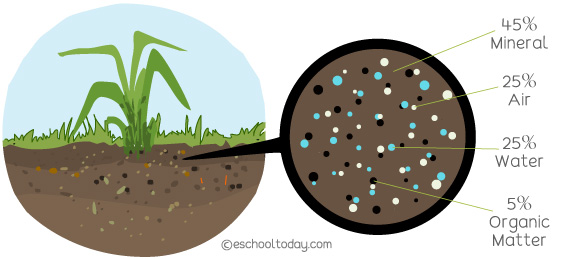- Soils
What is soil?
Soils are the loose mineral or organic materials found on the earth’s surface, usually (or averagely) made up of about 25% air, 25% water, 45% mineral, and 5% organic matter (humus, tiny living organisms, and sometimes plant residue).

It is the medium that supports rooted plants in a natural environment. There are soils practically on every land that is not covered by water.
There are many types of soils, usually placed in classes (types) based on their color, profile, texture, composition, or structure. Each soil type is formed differently and can be found in specific places on the earth’s immediate surface, mid and deep under the surface. Soils on the surface (a few millimeters deep) are usually exposed to direct climatic and environmental factors and easily blown away by the wind, washed away by water, or even broken down by temperature changes, human and animal activity. There are also soils found deep down the earth, often protected from climatic and environmental factors.
Because soils are formed in a variety of ways and infinite conditions, it is hard to give a number for the types of soils we have on earth. However, they can be grouped using the stuff that they are made of.
For this lesson, we shall look at Sandy, Silty, Clay, Loamy, Peaty, and Chalky Soils.
One important subject that many farmers and soil scientists lookout for is soil chemistry. It includes soil pH (the acidity of the soil), nutrient level, organic content, and the chemical composition of the minerals found in it. It is partly because different soils are used for different things and are important to know something about the soils you choose. These are usually determined by the geographic location of the soils, the types of plants growing in them, and even the environmental factors (water and air) that the soils are exposed to.
The study of soils as a naturally occurring phenomenon is called pedology, and a person who studies soils (soil scientist) is called a pedologist.
